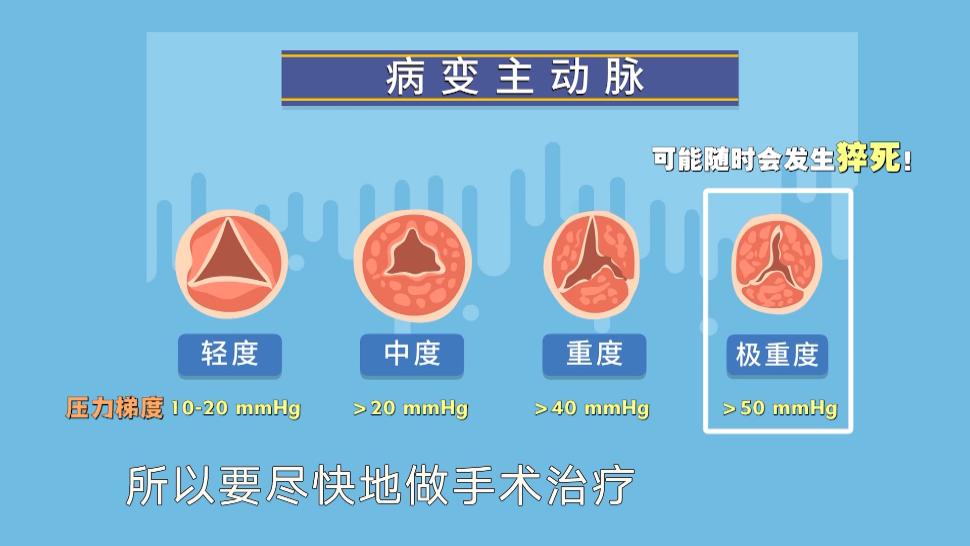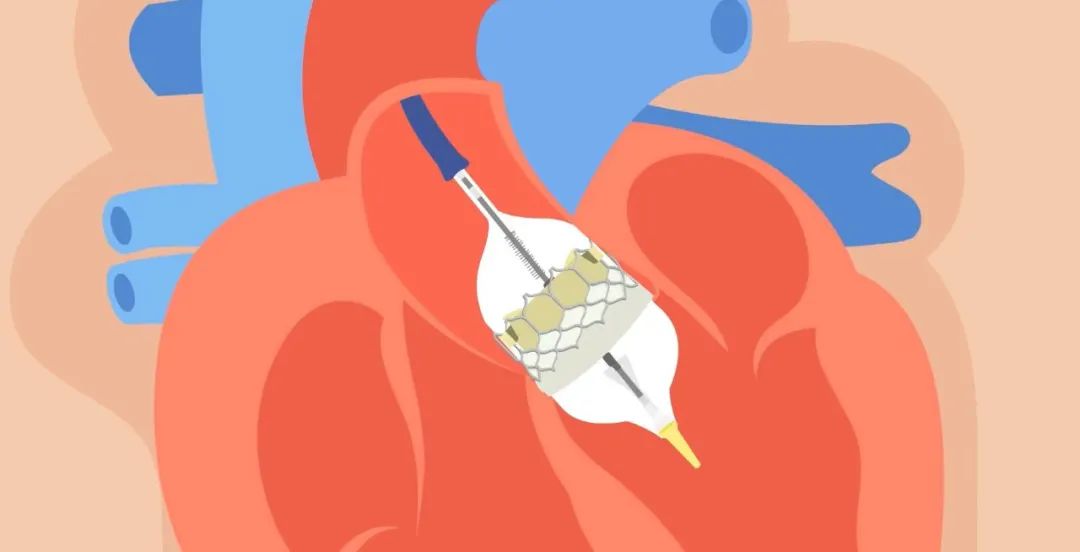Original x popularization of science factory x popularization of science factory

Today, a grandmother Zhang came to the X clinic program. She said that she had chest tightness and breathlessness since three years ago, but she only had one or two episodes a year, so she didn’t take it seriously.
However, the situation is getting worse and worse. By December last year (2022), it was so serious that I couldn’t sleep on my back. When I went to the hospital for examination, it turned out to be a heart problem!

Wei lai | chief physician
■ Zhongshan Hospital affiliated to Fudan University
Deputy director of cardiac surgery
■ Executive Director of Cardiac Surgery, Shanghai Geriatrics Center
■ Director of minimally invasive cardiovascular surgery
■ Shanghai Heart Valve Engineering Technology Research Center
deputy director
Aging of heart valve
Even more dangerous than some cancers!
The main function of the heart is to pump blood, and the heart valve is an important "valve". Under normal circumstances, this "valve" is one-way and blood cannot flow back.
If the valve calcifies and this "door" cannot be fully opened, then the blood supply will be insufficient.
If this "door" is broken, the pumped blood will flow back and the heart will not be able to supply blood normally.
People will feel chest tightness and breathlessness, and even sudden death in severe cases!
According to statistics, the prevalence of valvular disease has increased since the age of 60, and one in every eight people over 75 suffers from moderate and severe valvular disease, which is very common!
There are four valves in the heart, namely tricuspid valve, pulmonary valve, mitral valve and aortic valve.
Among them, the most important thing is aortic stenosis. Because the aortic valve of the human body is the key "door" connecting the heart and various tissues of the body, once the aortic valve has problems, it will affect the blood supply to the whole body.

Aortic stenosis can be divided into three grades: mild, moderate and severe. Mild and moderate diseases will affect the quality of life of patients, and there will be a long incubation period from occurrence to symptoms, even up to decades.
Severe cases can be life-threatening. If not treated in time, about 50% patients with severe aortic stenosis will hardly live for five years! The survival rate is lower than that of some malignant tumors that make people talk about it.
Why is the heart "valve" damaged?
The valve of human body, especially aortic valve, is the key "door" connecting the heart and various tissues of the body. Once the aortic valve has problems, it will affect the blood supply to the whole body. It will appear:
Manifestations of valvular heart disease:
1. It is easy to feel tired, and I feel tired after doing a little work, and my constitution is very poor;
2. If you can’t breathe smoothly, you will not be able to breathe when you are active, that is, you will be short of breath.
3. The face, hands, feet or other parts are swollen.
4. Abdominal swelling and loss of appetite.
5. The heartbeat is irregular, and sometimes it will suddenly accelerate. In case of sudden syncope, you should pay special attention.
Therefore, regular physical examination for people over 60 years old is particularly important.
There are many reasons for valvular heart disease. To sum up, there are probably the following five reasons.
1. Age factor
The prevalence of valvular disease began to increase from the age of 60, and with the further aging, the incidence of aortic stenosis increased sharply. One in every eight people over 75 years old suffers from moderate and severe valve disease.
2. Congenital diseases
Congenital diseases, especially bicuspid aortic valve malformation. According to the study of Copenhagen Baby Heart Study, the incidence of bicuspid aortic valve malformation in different races is generally 0.5%-1.5%. According to the data of interventional therapy for valvular heart disease in China in 2022, more than 45% of patients with bicuspid aortic valve were treated with TAVR in China, which is close to half. It is mainly caused by the structural problems of bicuspid aortic valve.
3, rheumatic heart disease
This rheumatic valvular heart disease mainly occurs in the mitral valve position.
In 1970s and 1980s, valvular heart disease in China was mainly rheumatic valvular heart disease. Because of poor living and economic conditions at that time, people were prone to rheumatic heart disease after being infected by streptococcus.
The onset age of rheumatic heart disease is earlier, and the onset population is relatively young.
With the overall economic and cultural development in China, valvular heart disease caused by infection or malnutrition has decreased, and senile degenerative heart valve disease has gradually increased. It is a disease caused by age growth and long-term work overload.
4. Infectious and immune diseases
Infectious and immune diseases can also cause reflux, but the risk is lower than aortic stenosis.
5. Other rare diseases
How to repair the broken valve?
The valve in life is broken, just change it to a new one. Then the valve of the heart is broken, what should I do?
The answer is: repair or replace it with a new one.
Aortic valve stenosis has been detected, and there are currently three treatments.
1. Drug therapy
At present, drug therapy can only reduce the burden on the heart by draining water or slowing the heartbeat, but it can’t have an effect on calcified valves. Therefore, if patients with severe aortic valve stenosis, surgery can be considered.
2. Traditional surgical valve replacement (included in the scope of medical insurance)
Traditional surgery usually requires thoracotomy. This method is suitable for valve repair or valve replacement in young patients.
At present, the traditional surgical valve replacement technology is very mature in China, and a large number of clinical data have been accumulated.
If it is really necessary to open the chest after being judged by a regular doctor, then there is no need to panic too much, and surgery can be performed according to the doctor’s advice.
3, interventional therapy surgery (has been included in the scope of medical insurance)
As we said earlier, many patients with aortic stenosis are often in their sixties and seventies. When they are old, they are in poor health, and the risk of surgical valve replacement is great. For such patients, interventional surgery can be considered.
Only through a minimally invasive incision in the leg or chest, the artificial valve can be implanted into the heart. The whole operation takes less than an hour and the wound is very small. Patients can often get out of bed and go home the next day, which is simple and fast.

Generally speaking, there are two kinds of prosthetic valves that can be replaced:
Mechanical valve:
Mechanical valves, mostly made of pyrolytic carbon materials, have the advantages of long service life, not easy to be damaged and relatively cheap.
However, because of its hard texture, it can not be minimally invasive intervened by catheter, and it can only be replaced by traditional thoracotomy, and it is easy to produce thrombosis. So this kind of valve is more suitable for young patients.
Biological valve:
The elderly often choose biological valves, which are made of animal hearts, soft and can be performed through minimally invasive surgery without thoracotomy. But the disadvantage is that compared with the mechanical valve, it has a certain service life and the price is slightly expensive.
Everyone’s physical condition and disease progress are different, and the applicable treatment scheme is also different. Medical treatment or surgical treatment, when to operate and which surgical method to choose should be evaluated and judged by professional doctors after a comprehensive physical examination.
Doctor’s health tips:
It is still necessary to remind the majority of middle-aged and elderly people to have regular physical examinations, especially those over 50 years old should have a complete physical examination every year, including electrocardiogram, chest X-ray, color Doppler echocardiography and some blood-related tests, such as blood lipids, blood sugar and other indicators closely related to cardiovascular diseases.
If we can find possible heart disease-related diseases in advance through annual physical examination, and adjust our living habits or carry out medical intervention accordingly, the burden on individuals, families and society will be greatly reduced.
Expert outpatient information
Weilai
Deputy director of cardiac surgery, Zhongshan Hospital affiliated to Fudan University
Outpatient service time: all-day outpatient service every Wednesday.
Outpatient address: East Campus of Zhongshan Hospital affiliated to Fudan University
(No.1609 Xietu Road, Xuhui District)
Read the original text